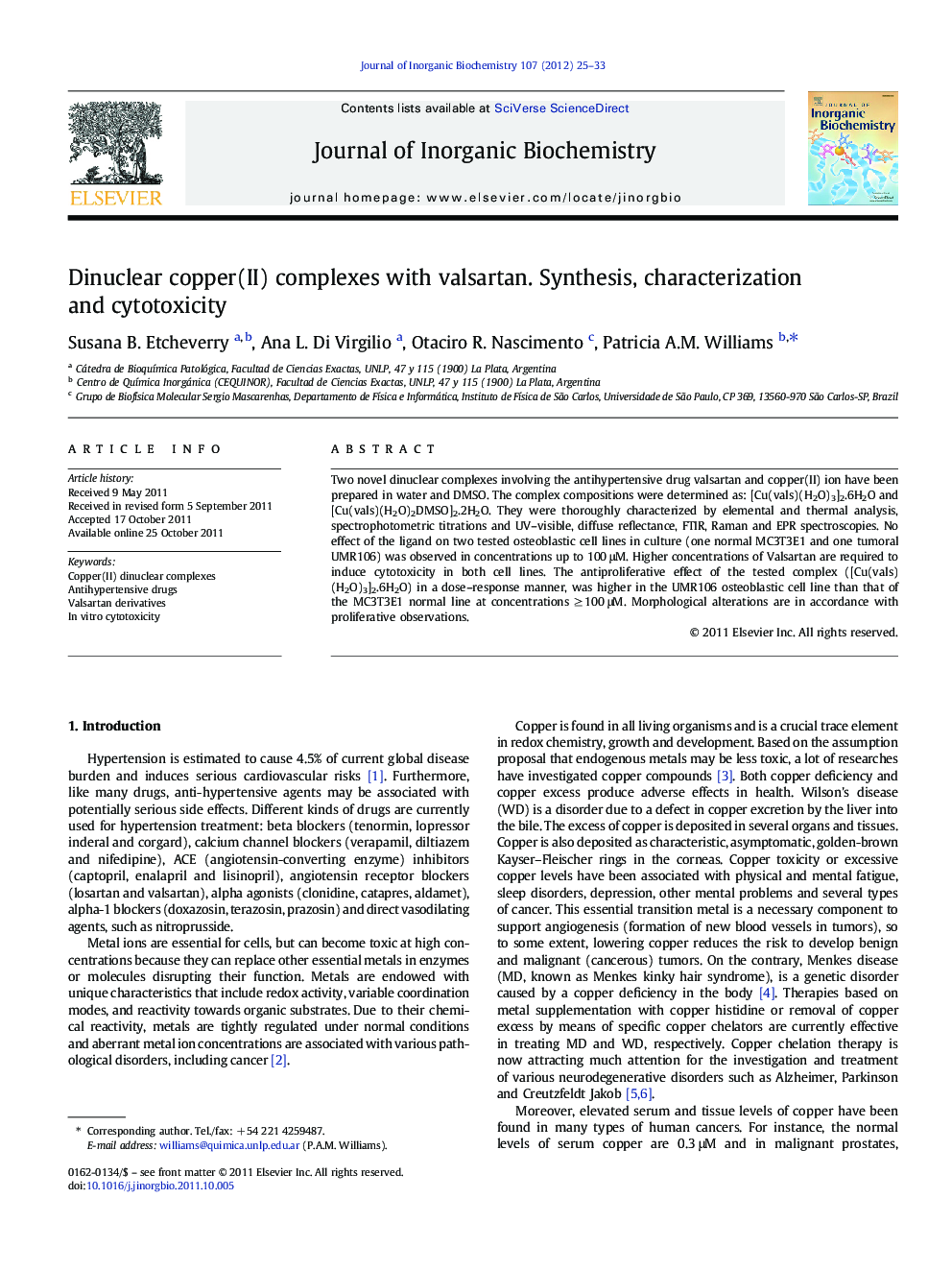| Article ID | Journal | Published Year | Pages | File Type |
|---|---|---|---|---|
| 1317826 | Journal of Inorganic Biochemistry | 2012 | 9 Pages |
Two novel dinuclear complexes involving the antihypertensive drug valsartan and copper(II) ion have been prepared in water and DMSO. The complex compositions were determined as: [Cu(vals)(H2O)3]2.6H2O and [Cu(vals)(H2O)2DMSO]2.2H2O. They were thoroughly characterized by elemental and thermal analysis, spectrophotometric titrations and UV–visible, diffuse reflectance, FTIR, Raman and EPR spectroscopies. No effect of the ligand on two tested osteoblastic cell lines in culture (one normal MC3T3E1 and one tumoral UMR106) was observed in concentrations up to 100 μM. Higher concentrations of Valsartan are required to induce cytotoxicity in both cell lines. The antiproliferative effect of the tested complex ([Cu(vals)(H2O)3]2.6H2O) in a dose–response manner, was higher in the UMR106 osteoblastic cell line than that of the MC3T3E1 normal line at concentrations ≥ 100 μM. Morphological alterations are in accordance with proliferative observations.
Graphical abstractTwo new dinuclear Cu(II) complexes containing valsartan were synthesized and characterized in the solid state and in solution. The complexes displayed antiproliferative effect in a dose response manner on normal and tumoral osteoblasts in culture. The antihypertensive drug did not show cytotoxicity up to 100 μM in the tested osteoblasts.Figure optionsDownload full-size imageDownload as PowerPoint slideHighlights► New dinuclear Cu(II) complexes with valsartan were synthesized and characterized. ► Valsartan had no effect on the proliferation of osteosarcoma cell line up to 100 mM. ► Antiproliferative effects in concordance with changes in cell morphology.
